20 Surprising Foods That Contain Gluten

Hinterhaus Productions / Getty Images
Medically reviewed by Karina Tolentino, RD
Gluten, a protein found in wheat, barley, and rye, can be a source of discomfort and negative health effects for people with conditions like celiac disease, gluten sensitivity, or wheat allergy.
Pursuing gluten-free alternatives sometimes can lead people to explore various different foods thinking they're safe from this protein. However, even seemingly harmless foods may contain gluten, posing a threat to those on a gluten-free diet. This article unveils the deceptive nature of foods that may appear gluten-free but can be a hidden concern for certain groups with specific dietary needs.
Gnocchi
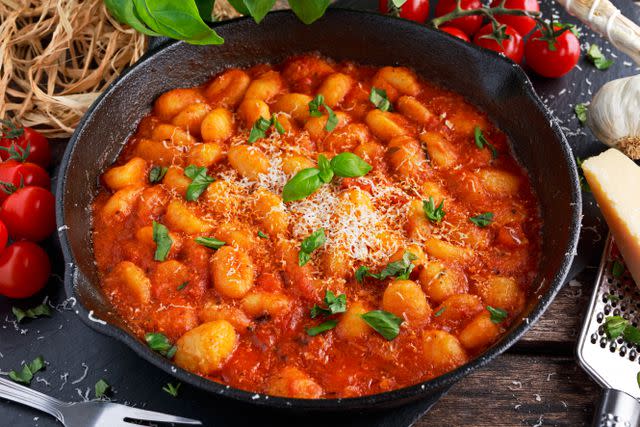
DronG / Getty Images
You might think gnocchi, which is a soft potato dumpling in Italia cuisine, is gluten-free since the primary carb used to make it is potato flakes. However, gnocchi also contains wheat flour, making it a source of gluten. Read the food labels and choose gluten-free gnocchi. If you're making gnocchi at home, experiment with gluten-free flour like rice flour.
Couscous

Rus32 / Getty Images
Though it may look like rice, couscous, a traditional food in the Mediterranean diet, is made from durum wheat semolina. It's recommended to opt for naturally gluten-free grains and starches such as quinoa, rice, beans, corn, and potatoes.
Egg Noodles
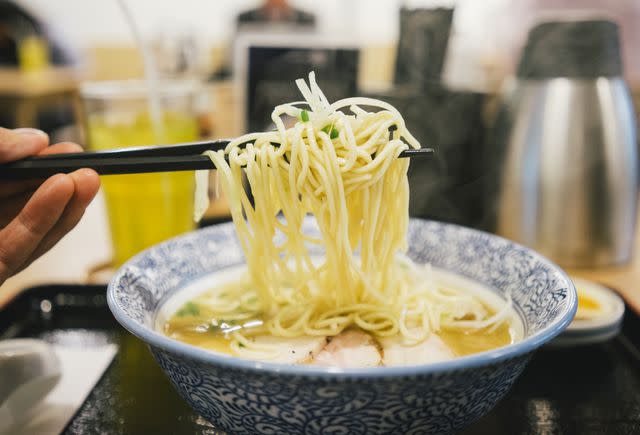
Skaman306 / Getty Images
Although eggs are a safe food, egg noodles aren't gluten-free. They're typically made with wheat flour in addition to eggs. Consider choosing rice noodles or mung bean noodles instead, as they're gluten-free.
Oats

Arx0nt / Getty Images
Oats and wheat are often processed with the same equipment, which can lead to contamination. Research shows that moderate oats consumption (up to 1/2 cup dry rolled oats daily) of pure, uncontaminated oats is tolerated by most individuals with celiac disease. Look for oats labeled gluten-free.
Some individuals with celiac disease also have an immune reaction to avenin, another type of protein in oats, and should avoid all oats, even those labeled gluten-free.
Also, consider trying grits for a hot cereal option. They're naturally gluten-free, since they're made from corn.
Granola
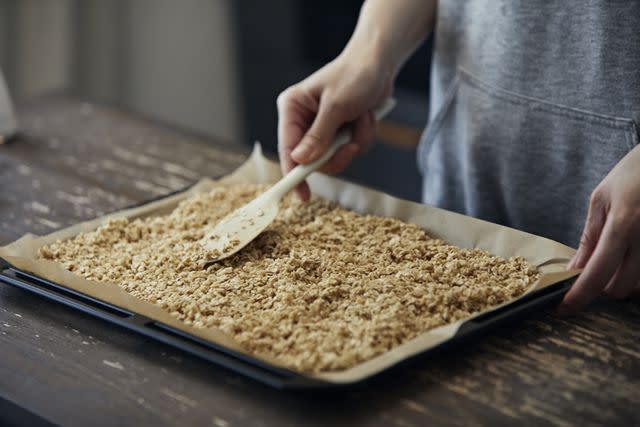
Yuki Kondo / Getty Images
Many granola bars and granola cereal are made from oats that aren't gluten-free. When choosing gluten-free granola brands, make sure to select the ones that use gluten-free oats in their ingredients.
Related: 10 Unhealthy Snacks You Might Think Are Good For You
Cornbread
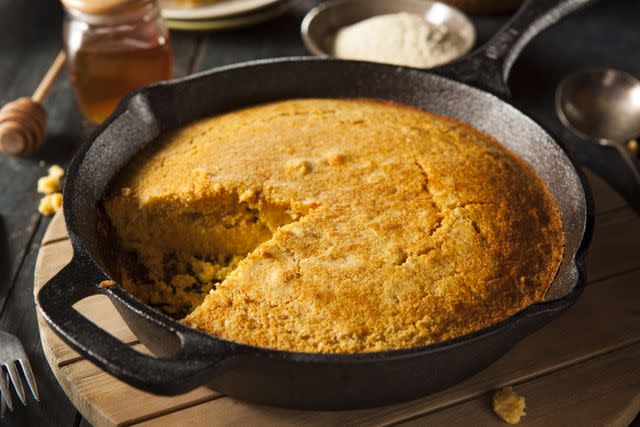
Bhofack2 / Getty Images
You might assume that cornbread is gluten-free because it's made from cornmeal. However, traditional cornbread mixes contain gluten, as shown on the ingredient with wheat flour listed. It's best to make your cornbread at home using a gluten-free cornbread mix, typically made of cornmeal and gluten-free starches like potato or tapioca.
Potato Bread
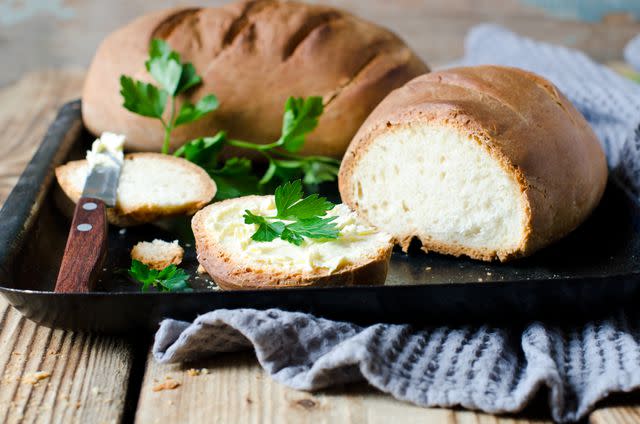
Teleginatania / Getty Images
Potato bread is another type of bread you may think is gluten-free but it actually isn't. Although potato flour or potato flakes are used to make potato bread, wheat flour is usually also used. To avoid gluten, opt for bread that's labeled gluten-free, or try adding potatoes to your starch rotation.
Cornflakes
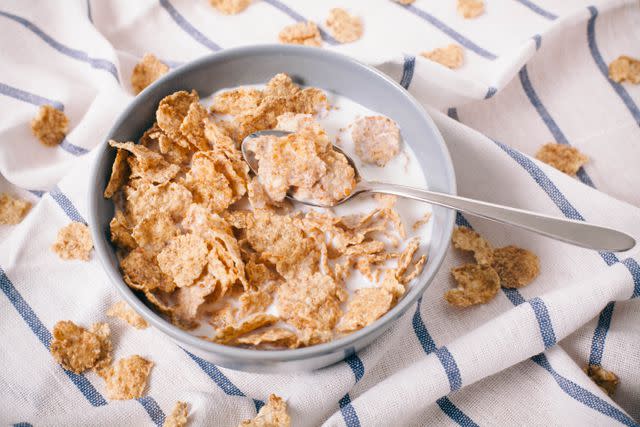
Agrobacter / Getty Images
You might assume that cornflakes are a safe choice to eat for a gluten-free cold cereal, since they're made from milled corn. However, some popular cereal brands also contain malt extract or flavoring derived from barley, which is a source of gluten. When choosing cornflakes, make sure to select those labeled gluten-free just to make sure.
Rice Puffs
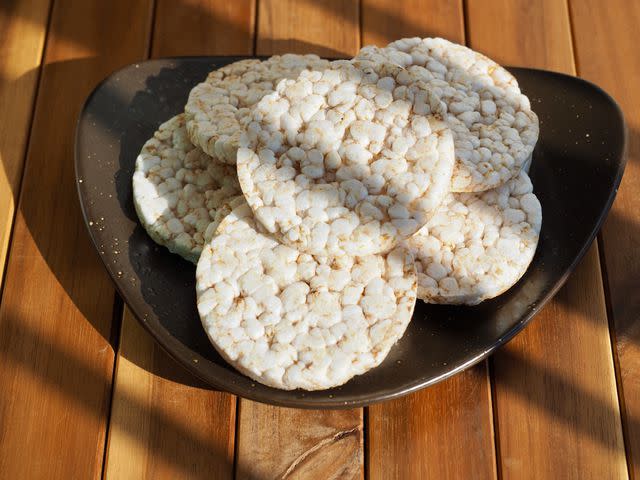
SUNGSU HAN / Getty Images
Like with cornflakes, be aware that not all rice puffs are necessarily safe to consume, even if they're made with rice. Choose gluten-free rice puff cereals that favor sugar, salt, and molasses for flavor, steering clear of those made with malt, a barley derivative.
Fried Foods
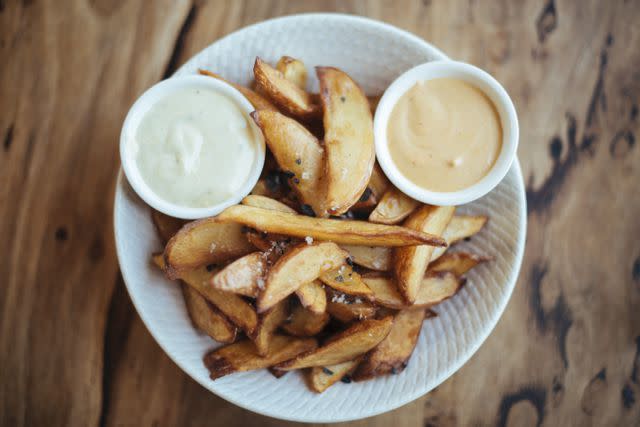
Naomi Rahim / Getty Images
Fried foods like French fries and fried chicken are typically made of batter or breadcrumbs that contain wheat. Consider choosing foods that use healthier cooking methods, such as baking or grilling, which require no batter or breadcrumbs. If you're eating out, you'll still need to be familiar with the ingredients in menu choices, regardless of the cooking method.
You can prepare crispy foods at home by using gluten-free flour or breadcrumbs and opting for air-frying or baking instead of deep frying.
Croutons
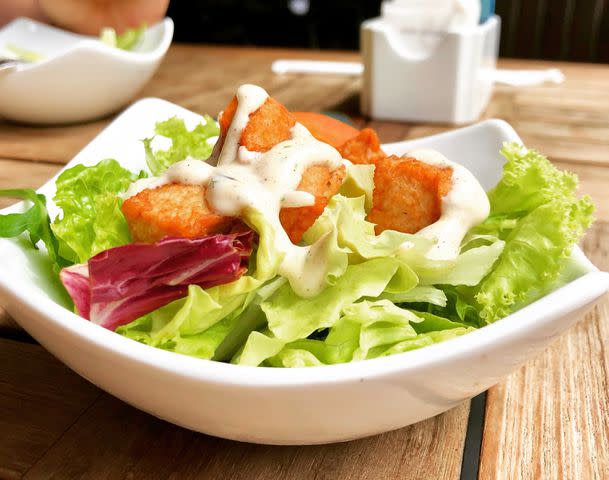
Ilham Nur Fadli / 500px / Getty Images
Croutons are pieces of bread, usually wheat-based bread, that are fried or toasted. Assume croutons contain gluten or wheat if the bread type and ingredients are unknown.
You can make your croutons at home using gluten-free bread. When you're at a restaurant, make sure to ask if the salad contains croutons and request to remove it. Go for salads with vegetables like celery and carrots. These are naturally gluten-free and can satisfy a crunch craving.
Soy Sauce
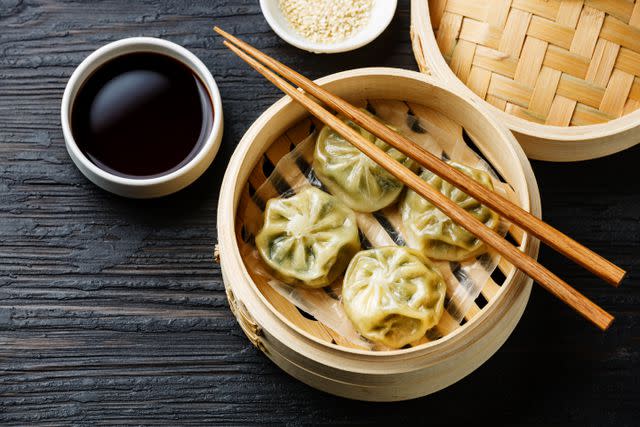
Lisovskaya / Getty Images
Wheat may not come to mind when you think of the ingredients used to make soy sauce, but it isn't gluten-free, since wheat is the main carbohydrate ingredient in it. Liquid aminos is a gluten-free liquid soybean alternative to soy sauce with a similar appearance and flavor.
Soups
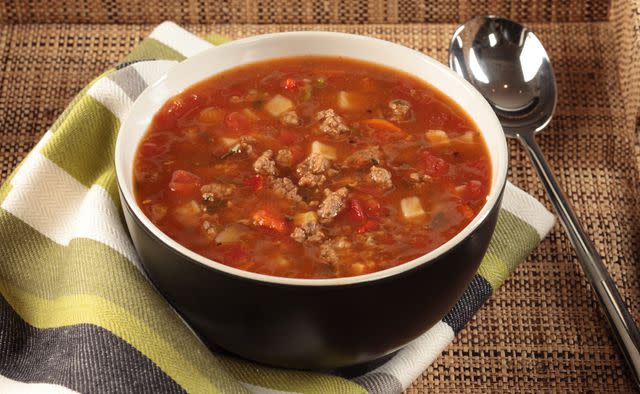
Steve Lalich / Getty Images
Be especially cautious of soups with gluten-containing ingredients such as barley, pasta, noodles, and soy sauce, as well as cream-based soups that use wheat flour to thicken. Make sure to read the labels of canned and pre-prepared soups. Opt for soups that are labeled gluten-free or those free of any gluten-containing ingredients. When making soup at home, you can use corn starch or arrowroot starch as a gluten-free thickener.
Sauces and Gravies
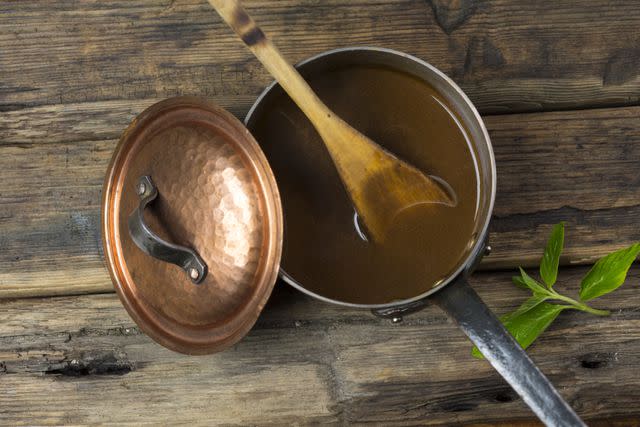
4kodiak / Getty Images
Sauces and gravies can contain hidden gluten since they are often thickened with wheat flour roux. Sauces and gravies made at restaurants or pre-made ones are likely sources of gluten so it's best to avoid them or inquire with a restaurant about gluten-free options before you dine out. At home, you can make your sauce or gravy using a gluten-free thickening agent like arrowroot or cornstarch.
Salad Dressings and Marinades
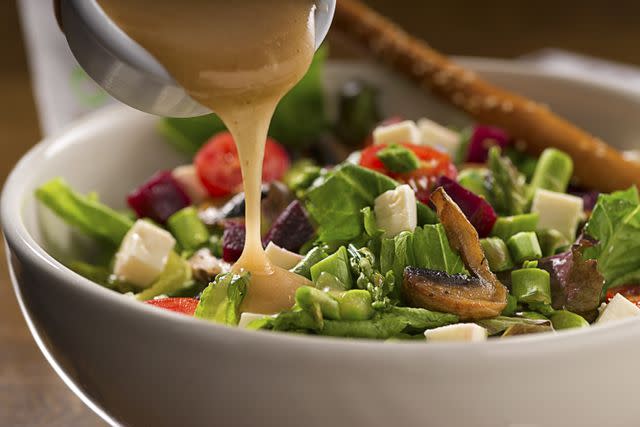
Jmalov / Getty Images
Salad dressings and marinades may contain gluten-containing ingredients like malt vinegar, soy sauce, and flour. Instead, choose brands that are labeled gluten-free or make your dressing or marinade using naturally gluten-free ingredients like olive oil, fresh lemon juice, or gluten-free vinegar. Examples of gluten-free vinegar include apple cider vinegar, distilled vinegar, balsamic vinegar, and wine vinegar.
Meat Substitutes
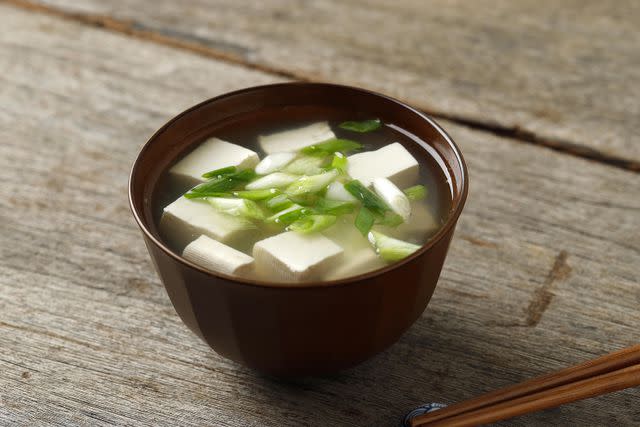
Ika Dapurhangus / 500px / Getty Images
Meat substitutes like veggie burgers and veggie sausages made of seitan, a wheat gluten, should be avoided. Some food brands offer gluten-free meat alternatives or try making your plant-based meat alternative at home with beans or lentils.
Deli Meats
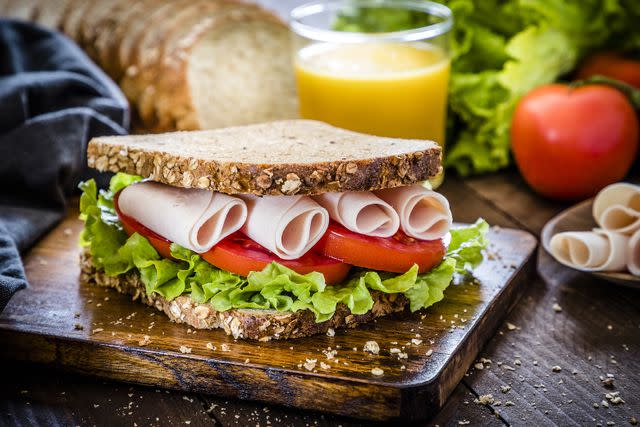
Carlosgaw / Getty Images
According to the Gluten Intolerance Group, most deli meats are gluten-free. However, some may contain dextrin or modified food starch that's derived from wheat or have soy sauce for added flavor. It's always best to read the ingredient labels carefully and opt for products that are clearly labeled gluten-free.
Chips
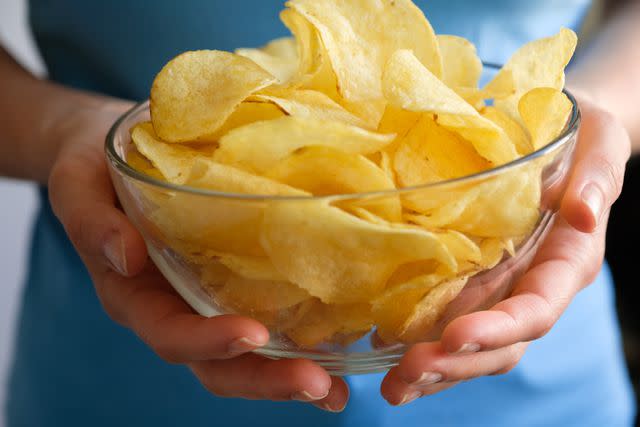
Aleksandr Zubkov / Getty Images
Some chips like potato chips and certain tortilla chips may contain gluten. For instance, potato chips may have gluten sources like malt vinegar or wheat starch. Also, not all tortilla chips are made entirely of corn, like artisan tortilla chips or multi-grain tortillas. Choose chips that are labeled gluten-free.
Restaurant Eggs
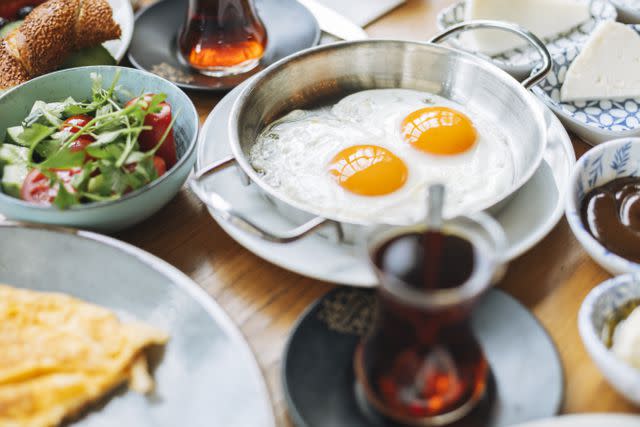
Anna Cinaroglu / Getty Images
On their own, eggs are naturally gluten-free. However, some restaurants add pancake batter, typically made with wheat flour, to their scrambled eggs or omelets. Before dining out, it's a good idea to ask the restaurant how they prepare their eggs and what their gluten-free options are.
Beer

Kar-Tr / Getty Images
Distilled liquor, even if made from wheat, rye, or barley is considered gluten-free because of the distillation process. However, beer and malt beverages are fermented and not distilled and therefore aren't gluten-free. If you're looking for alcoholic drinks that are gluten-free, consider choosing gluten-free beer, distilled liquor such as vodka or gin, or wine.
How to Avoid Foods With Gluten
Making informed choices is essential for those maintaining a gluten-free diet. Here are some quick tips on how to avoid foods with gluten:
Focus on whole, fresh foods like produce, meats, seafood, dairy, and eggs as they're naturally gluten-free.
Include naturally gluten-free starches like rice, corn, potatoes, and legumes.
Explore the store's gluten-free section.
Scrutinize the ingredients list for wheat, barley, rye, or any gluten-containing derivatives.
Seek products with gluten-free certification labels.
When dining out, communicate your gluten-free needs to restaurant staff, and ask questions about menu items to ensure safe choices.
A Quick Review
By staying informed, reading labels meticulously, and making intentional choices, you can navigate the challenges of gluten-free living more effectively. These 20 unexpected sources of gluten serves as a reminder that awareness and education are crucial tools in the pursuit of a truly gluten-free lifestyle.
For more Health.com news, make sure to sign up for our newsletter!
Read the original article on Health.com.


